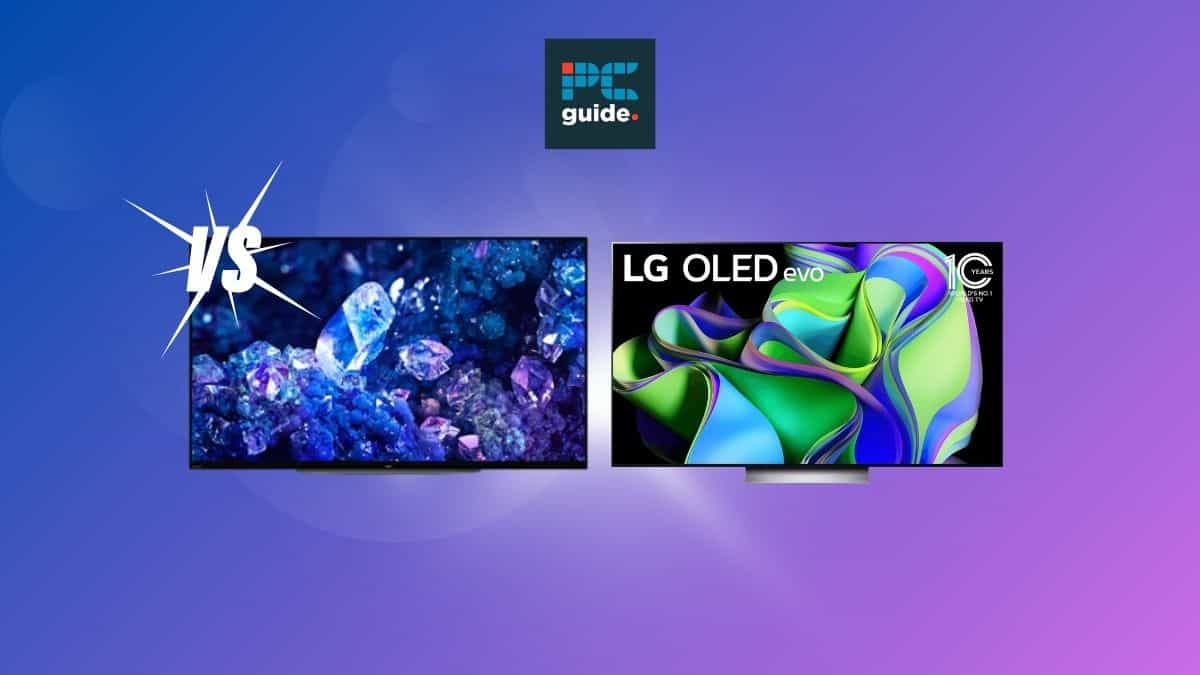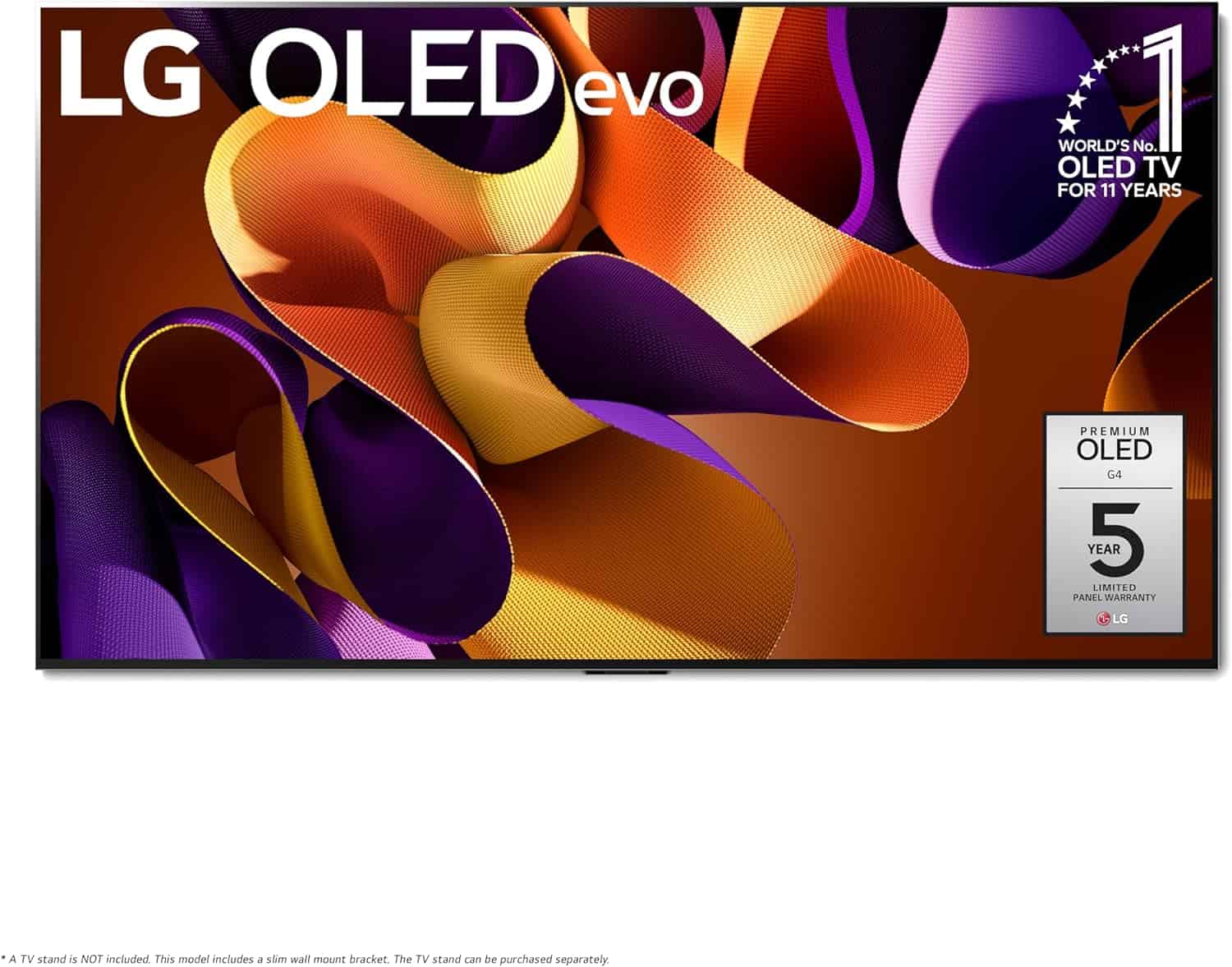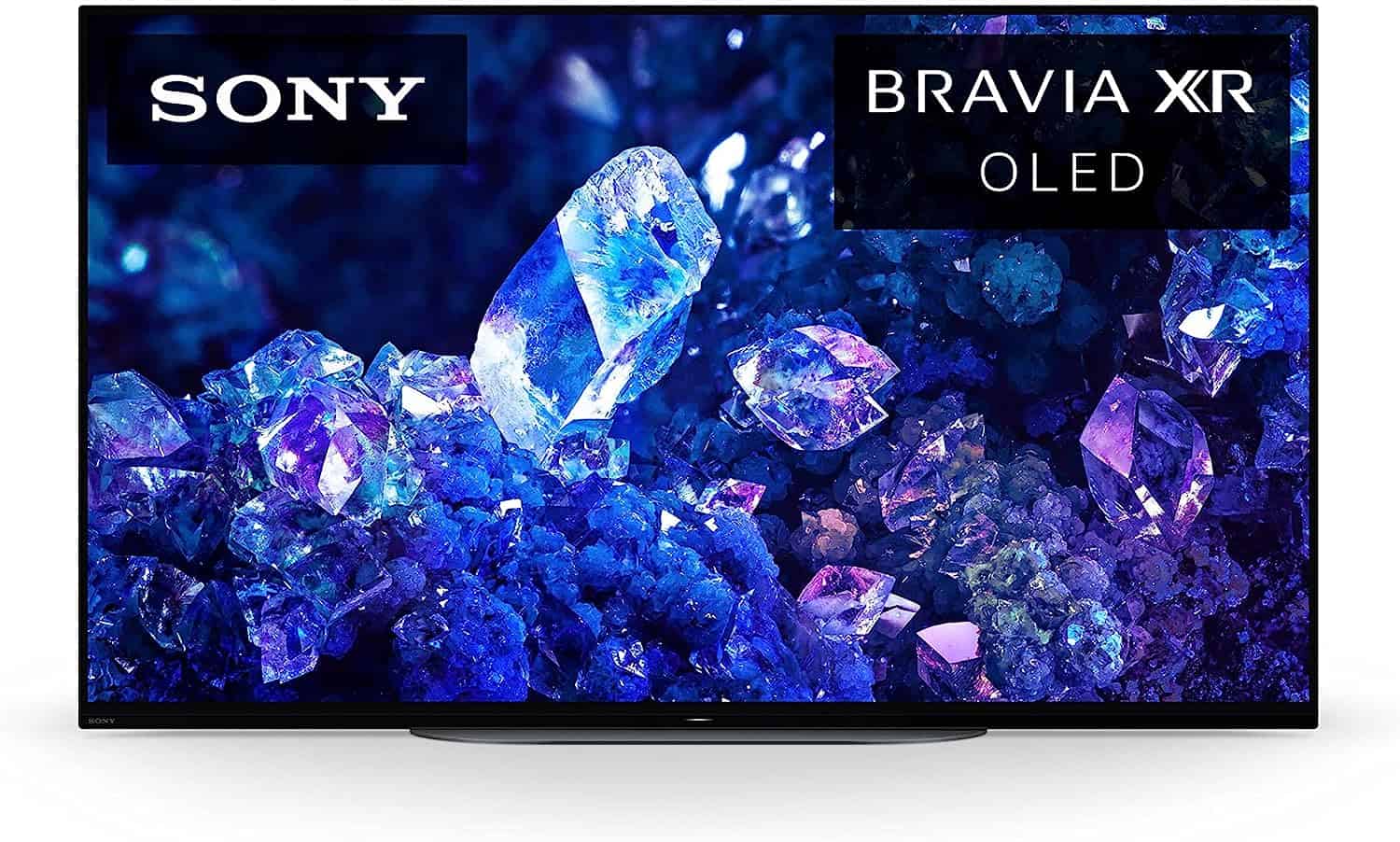LG G4 OLED vs Sony A90K – is Sony better?

Table of Contents
The upcoming release of the LG G4 is fast approaching, so we wanted to know how it compares to other high-end OLED TVs on the market. Announced at CES earlier this year, the next-gen of the LG G-series is set to be LG’s next flagship product, but how do its impressive specs compare to a formidable OLED giant, like the Sony A90K? In this article, we take a look at the LG G4 OLED vs Sony A90K; covering their specs, performance, and pride in a side-by-side comparison.
The Sony A90K has consistently been a strong contender against LG TVs, often outperforming its counterparts within the same OLED category. However, in this comparison, the A90K steps out of its usual class to face off against LG’s flagship, the G4 OLED. Thanks to the innovative Micro Lens Array (MLA) technology, the LG G4 OLED surpasses the A90K, setting a new benchmark for TV excellence. But how do they compare in other areas? Let’s take a look.
Prime Day is finally here! Find all the biggest tech and PC deals below.
- Sapphire 11348-03-20G Pulse AMD Radeon™ RX 9070 XT Was $779 Now $739
- AMD Ryzen 7 7800X3D 8-Core, 16-Thread Desktop Processor Was $449 Now $341
- ASUS RTX™ 5060 OC Edition Graphics Card Was $379 Now $339
- LG 77-Inch Class OLED evo AI 4K C5 Series Smart TV Was $3,696 Now $2,796
- Intel® Core™ i7-14700K New Gaming Desktop Was $320.99 Now $274
- Lexar 2TB NM1090 w/HeatSink SSD PCIe Gen5x4 NVMe M.2 Was $281.97 Now $214.98
- Apple Watch Series 10 GPS + Cellular 42mm case Smartwatch Was $499.99 Now $379.99
- ASUS ROG Strix G16 (2025) 16" FHD, RTX 5060 gaming laptop Was $1,499.99 Now $1,274.99
- Apple iPad mini (A17 Pro): Apple Intelligence Was $499.99 Now $379.99
*Prices and savings subject to change. Click through to get the current prices.
But first, if you’d like to find out more about what LG has in store for TV releases this year, take a look at our LG C4 vs Sony A90K comparison guide, where we see how the latest addition to LG’s C-series stacks up against the formidable Sony A90K. Additionally, if you want to read up on everything related to the LG G4, check out our LG G4 release date round-up, where we discuss the expected release date of this product, as well as look at its features and specs in detail.
LG G4 OLED vs Sony A90K – specs at a glance
| Specifications | LG G4 OLED | Sony A90K |
|---|---|---|
| Sizes | 55″, 65″, 77″, 83″, 97″ | 42”, 48” |
| Ports | 4x HDMI 2.1 | 2x HDMI 2.1 |
| Panel Type | WOLED (MLA) | WOLED |
| Resolution | 3840 x 2160p (4K) | 4K (3840 x 2160) |
| HDR | HDR10, HLG, Dolby Vision | HDR10, HLG, Dolby Vision |
| Smart TV software | Web OS 24 | Google TV 10 |
| Processor | Alpha 11 | Cognitive Processor XR |
| Native refresh rate | 144Hz | 120 Hz |
Specs and performance comparison
Gaming
Sony’s A90K is strategically positioned as a prime choice for gamers, especially those wielding an Xbox Series X or a Sony PlayStation 5 console. It’s packed with gaming-centric functionalities aimed at delivering an optimal experience. One of the highlights is its performance in reducing input lag, a critical factor for gamers demanding real-time response to their actions.
The A90K achieves an input lag of 16.1ms, as verified by a Leo Bodnar Lag Tester. While this figure is commendable—falling below the 20ms threshold that marks a solid gaming experience—it doesn’t quite reach the gold standard of 10ms that distinguishes the best gaming displays.
On the other hand, the LG G4 OLED excels in this very domain, offering an exceptionally low input lag that ensures super responsive gameplay with minimal ghosting. This is further complemented by a high native refresh rate of 144Hz, along with support for Variable Refresh Rate (VRR) technologies such as FreeSync Premium and G-Sync compatibility.
Performance and brightness
The Sony A90K shines in environments with controlled lighting, especially in dark rooms. Its outstanding near-infinite contrast ratio and perfect black uniformity ensure that movies and games look their best without any blooming around bright objects. However, when it comes to brightness, the A90K shows restraint.
In Standard picture mode, this Bravia cam product achieves a peak brightness of 219 nits, and in Custom mode—a setting akin to Sony’s calibrated view—it slightly dips to 206 nits. While these levels are adequate for dark settings, picture quality might be reduced in brightly lit environments.
Conversely, the LG G4 OLED, armed with its Micro Lens Array (MLA) technology, boasts a remarkable peak brightness of up to 3000 nits. This significant boost in brightness makes the G4 more adaptable to various lighting conditions, enhancing its appeal for a broader range of viewing scenarios. The incorporation of LG’s Alpha 11 processor plays a crucial role in achieving this brightness level, as it optimizes the output without compromising the integrity of blacks and contrast that OLED panels are known for.
When it comes to color accuracy, the Sony A90K demonstrates exceptional prowess. Its SDR color performance is notably impressive, with a Delta-E value of 8.2386, indicating a very close match between the source color and the display. Additionally, its coverage of the Rec. 709 color gamut at 99.78% is nearly unmatched, ensuring that colors are rendered with precision and vibrancy.
The A90k has enhanced audio with its Acoustic Surface audio Feature and Dolby Atmos support, creating an immersive experience for the viewer. Whereas the LG G4, thanks to its Alpha 11 chip, is able to incorporate a new AI Sound Pro feature that will process 11.1.2 surround upmixing.
Price comparison
Directly comparing the prices of the LG G4 OLED and Sony A90K poses a bit of a challenge due to the differences in available sizes. While the G4 sizes start at 55 inches at $2,599.99, the A90K only features 42-inch and 48-inch models and the prices for those don't go above $1,400.
| Sizes | LG G4 OLED price | Sony A90K price |
|---|---|---|
| 42-inch screen size | n/a | $1,299.99 |
| 48-inch screen size | n/a | $1,399.99 |
| 55-inch screen size | $2,599.99 | n/a |
| 65-inch screen size | $3,299.99 | n/a |
| 77-inch screen size | $4,599.99 | n/a |
| 83-inch screen size | $6,499.99 | n/a |
| 97-inch screen size | $24,999 | n/a |
LG G4 vs Sony A90K – which is better?
In this battle between LG and Sony OLED TVs, the winner is not clear-cut. Both TVs possess impressive features within a similar price range. The A90K, with its smaller screens, is ideal for dark rooms, offering premium quality in compact spaces. Conversely, the LG G4’s larger sizes and advanced technology shine in well-lit environments, providing versatility and superior visual performance. The choice ultimately hinges on the specific needs of the buyers—whether prioritizing a cozy movie night in a dim setting or embracing a broad spectrum of content in a sunlit living room. Each TV excels in its niche, making the decision a reflection of personal preference and intended use.
LG G4 OLED vs Sony A90K – Conclusion
In conclusion, the LG G4 OLED and Sony A90K target distinct markets. Therefore, the TV that best suits your needs depends on how you intend to use it, what your space is like, and your budget. We hope this comprehensive comparison guide has aided you in any decision process you are making. Stick with us if you’d like to stay up-to-date on all the info being released on the upcoming LG G4.



